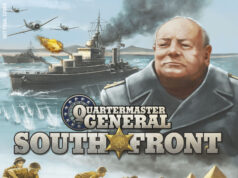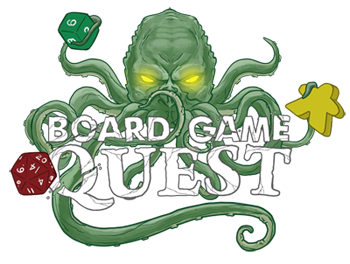 My wife and I love true crime and murder mystery shows, movies, and even podcasts. We, unfortunately, are a bit competitive trying to figure out who dunnit and try not to blurt out until the final reveal. We’re “that” couple that intently watches or listens for clues, going back to hear any information that may have been misheard. And mercy on those that interrupt us, it’s not usually pretty.
My wife and I love true crime and murder mystery shows, movies, and even podcasts. We, unfortunately, are a bit competitive trying to figure out who dunnit and try not to blurt out until the final reveal. We’re “that” couple that intently watches or listens for clues, going back to hear any information that may have been misheard. And mercy on those that interrupt us, it’s not usually pretty.
That brings us to today’s review, Dying Message from Oink Games. This deduction game has one player providing clues to their murder, and other players try to guess who murdered them. Dying Message is for 2-8 players and plays in about 20 minutes.
Game Overview:
Players need to decide which of the 3 versions of Dying Message they wish to play: joint investigation, competitive investigation (for 3+ players), or speedy death showdown (for 2-3 players). Today’s review will focus on competitive investigation.
Dying Message setup is easy and quick. Choose a player to be the victim, and the rest are detectives. The victim will draw and place 6 suspect cards under 6 corresponding alpha chips (A-F) and 15 message cards, and decide which side to use. The remaining cards from both decks will be put aside. The victim will secretly roll the alpha die and determine the killer, and then hide it under the die cover for a later reveal.
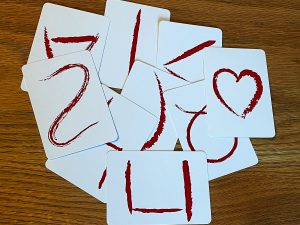
The detectives now step away from the table out of sight of the victim and set a timer (1-2 minutes, depending on player experience). The victim can now arrange the message cards, but may only use the current side to give a hint(s) to who the killer is. Lastly, the victim will sit and arrange themselves on the table (along with a red felt sheet if they wish to show the crime scene. The detectives will enter the room after the timer expires and see the victims’ dying message, and may take pictures of the crime scene.
After the photos are taken, the victim should get up and let the detectives do their work. The detectives will read the suspect cards, review photos of the victim and their dying message, and decide collectively who the killer is. This may be timed depending on players’ preferences, and the victim cannot speak or provide any additional hints. Once the detectives have made a final decision, they point to the suspect card and say, “It was you!” The victim will pick up the judgment card and flip it to the Found Peace side if the detectives were correct or Lost Hope if they were wrong, and then reveal the alpha die.
Dying Message ends once each player has been the victim. Each player will take score chips and give a 2 to the player who had the best dying message and 1 to their personal favorite. Congratulate players who earned a lot of points (not a typo).
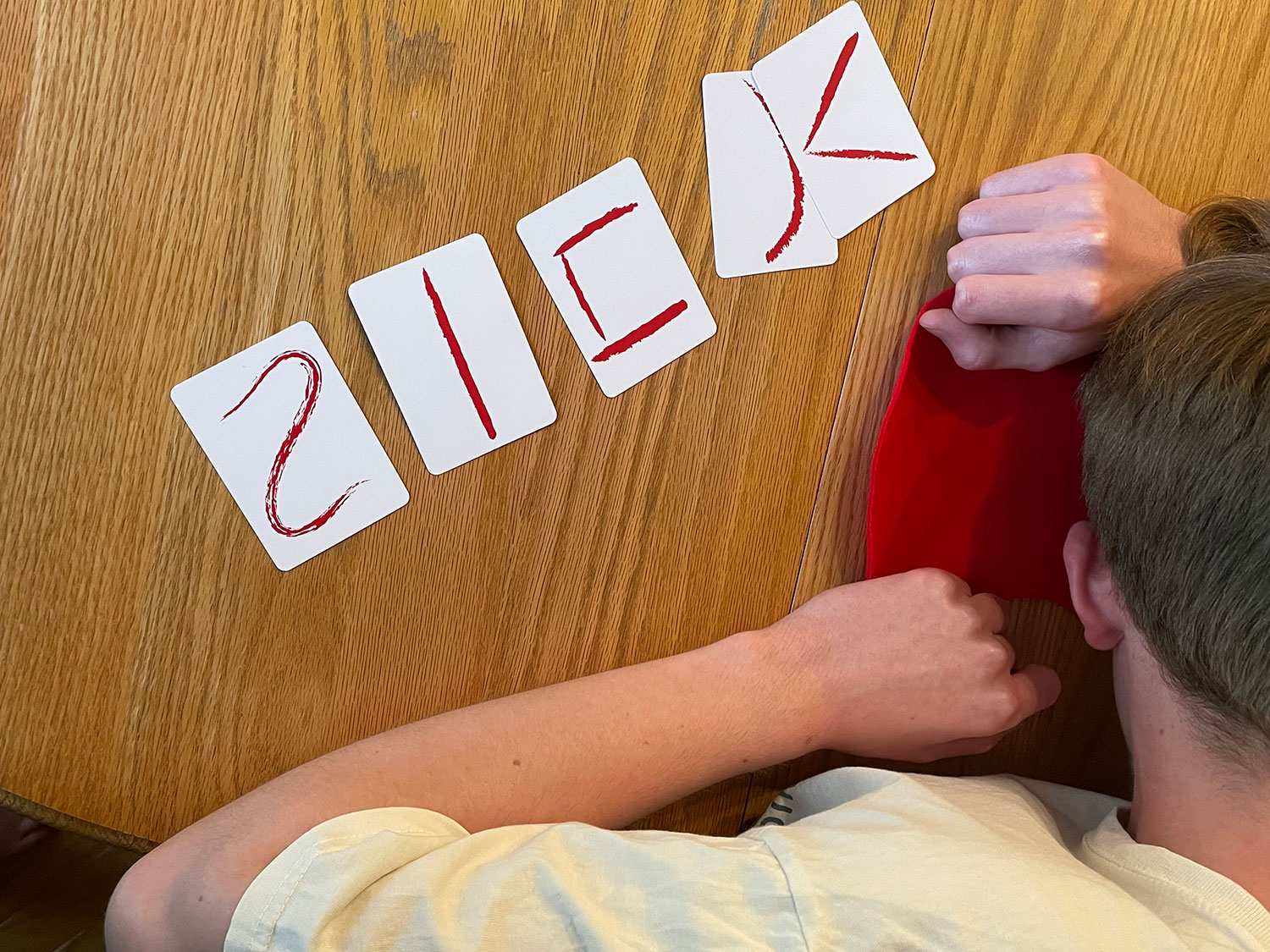
Game Experience:
Dying Message is one of those games that is easy to learn and teach, and because of that is very fast to the table for new or existing players. The setup is straight forward for each version and has simple mechanics that allow any player to quickly master. The only thing that might trip players up is the scoring rules which might have players say, “did I read that right?” and that will be covered below in more detail.
The best part of this game is being a detective and taking pictures of the body and talking through the suspects and dying messages. Reading through the suspect backgrounds and eliminating ones, trying to make sense of the dying message, and comparing pictures of the crime scene is a blast. Don’t get me wrong, the victim can be fun too, but if you don’t like the suspect you rolled or can’t come up with a “good” dying message, it’s more stressful because you’re working against the timer.
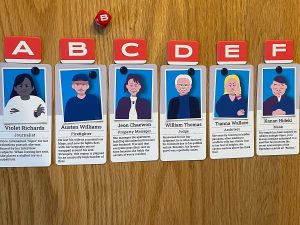
Dying Message does have a few things that need to be called out as possible issues. The first is that I don’t know if I would label this a game, but more of an activity. There’s nothing wrong with that, but I have a feeling that some gamers might prefer to play the competitive investigation version because there is a “winner”, whereas the joint investigation or speedy death showdown versions just give out points and are more of an activity. Again, nothing is wrong with Dying Message being an activity and giving players an experience. I just want to make readers aware of this.
I do think the biggest thing that is holding Dying Message back from being rated higher is that the more you play, it will become repetitive. The first play was the best, and the second was fine, but the third was a slog. These plays were not within the same game night, but Dying Message just feels repetitive after multiple plays. You also definitely want a deeper suspect deck because, depending on a higher player count, you will repeat cards in one session, which lessens the experience.
Final Thoughts:
Dying Message does help a bit to scratch that detective itch with easy to learn and fast to the table play, and really gives you a good detective feel by taking pictures, reviewing suspects, and trying to decipher the dying message.
Now, what it doesn’t scratch is being a game but more of an activity, and unfortunately, the newness will wear off quickly, and it will become repetitive.
Final Score: 2.5 Stars – An initially fun deduction “game” where players take turns being a victim and detectives.
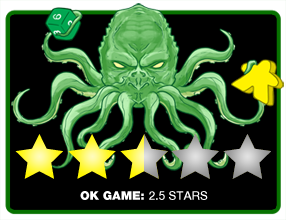 Hits:
Hits:
• Easy to learn and fast to the table
• Crime scene investigation
Misses:
• Feels more like an activity than game
• Game play will feel repetitive










